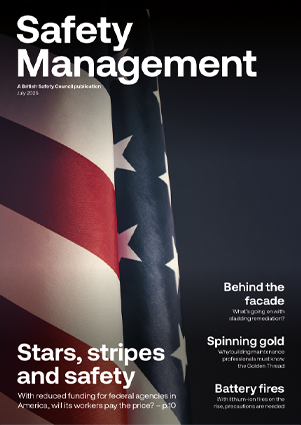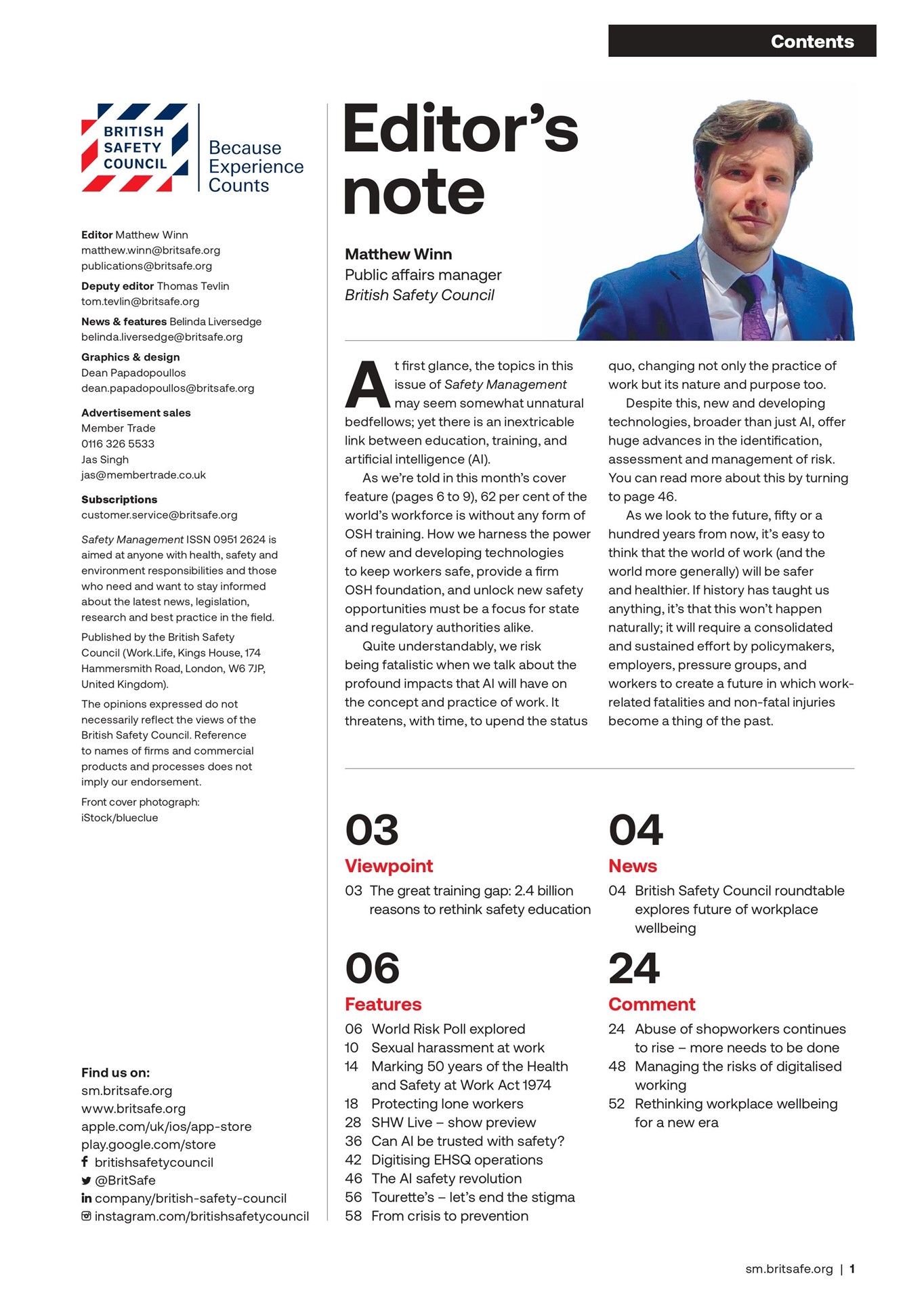A controversial title but a book coming from the right place, 'Paper Safe' explores the way in which the author has seen occupational safety and health (OSH) management develop into a ‘bureaucratic exercise’, which is the biggest source of legal liability.
Features
Book review: 'Paper Safe: The triumph of bureaucracy in safety management', by Gregory Smith
With more than 20 years’ experience in health and safety law in Australia, the author shares evidence-based observations to demonstrate that OSH paperwork can fail in its desired goals if an organisation’s or practitioner’s focus and attention is wrong or misdirected. The author’s main point is a passionate plea for organisations to move away from an obsession with compliance and OSH activities, towards a better sense of clarity and purpose when managing OSH.

Paper Safe was written by Gregory Smith
Why do I feel this is an essential read for safety professionals? This book was a humbling experience as there were examples included that I had witnessed within my safety career.
There were two key concepts that really struck a chord with me. Firstly, the presence of an ‘illusion of safety’, which the author describes as activities being carried out to serve compliance. He challenges whether these activities do actually reveal and uncover a true representation of risk, or maybe even drive a false sense of security in the effectiveness of OSH risk management.
Using common examples such as inspection checklists being a ‘tick box exercise’ and ‘traffic light reporting’ as a colours/numbers game, he argues it is unclear whether these activities add true value to OHS. He argues: “[These paper-based tasks] tell us nothing about the influence the activity has on safety improvement” – something that will no doubt resonate with readers.
Secondly, he discusses ‘The Safety Paradox’ – initiatives and processes that are often implemented with good intentions, but instead risk undermining the safety culture (he also agrees that initiative overload is a very real phenomenon).
Using further commonly adopted approaches – such as ‘Golden Rules’ (mandatory safety rules that must be followed, no matter how arbitrary they may seem), and ‘5 points of PPE’ (where high-viz clothing, safety helmets, boots, glasses and gloves must be worn at all times, regardless of the level of risk) – he demonstrates that, when it comes to managing OSH risks, a one-size-fits-all approach really doesn’t work and practitioners must challenge this way of thinking.
He even goes so far as making the bold statement that “…in many ways, audit and accreditation have become the window dressing of health and safety management – a shiny exterior with no need to look deeper”.
The book presents many other arguments and concepts, and for OSH practitioners, the following sentiments and observations are worth reflecting on:
- “A go to reaction of H&S is to ‘layer’ the work practice with more bureaucracy – additional training, added checklists and more procedures” – but does this help?
- Written OSH procedures, materials, instructions, reviews, training notes etc, must be tailored to the audience to drive engagement and consultation – “The more our processes are directed at achieving audit/certification outcomes, the more they are removed from day-to-day operations”
- Any review of the effectiveness of an OSH approach must be truthful – “For your next H&S report, try this: scrap your traditional board report, pick a critical risk such as working at height, and report to what extent the risk has really been managed so far as reasonably practicable”
- Investigations into disasters (such as Piper Alpha) show that a systemic failure of crucial processes is almost always a major causative factor, but they also highlight the role of assumption, and a lack of critical thinking, which has infected OSH management.
Overall, at 180 pages, Paper Safe is a quick yet thought-provoking read. The author is fair in trying to provide a balanced view of OSH management both past and present. However, I felt at times the book struggled to offer tangible solutions to some of the problems identified.
For OSH professionals looking to challenge themselves on traditional ways of working, the book is a useful starting point, and the author is clearly striving to encourage practitioners to reintroduce critical thinking into OSH practices.
The book can be purchased here.
Book review by Rob Bullen CFIOSH, Senior EHS specialist at HandsHQ
FEATURES

Facing the facts: protecting your outdoor workforce from UV exposure and skin cancer
By SC Johnson Professional on 11 July 2025
With outdoor workers at significant risk of skin damage, ageing and cancer due to exposure to the sun’s UV rays, it’s essential that employers in sectors like construction and agriculture create a working environment where sun safety precautions become the norm, rather than the exception.

2025 UK fire safety regulation updates: a quick guide
By Chloe Miller on 11 July 2025
The regulatory landscape covering fire safety arrangements and structural features in domestic and commercial buildings has undergone a number of significant changes in recent years, making it essential for responsible persons to review their approach to keeping residents, workers and the nearby public safe from the risk of fire.

Tackling new fire risks as Fire Door Safety Week celebrates 12th year
By Helen Hewitt, British Woodworking Federation on 11 July 2025
The British Woodworking Federation’s annual Fire Door Safety Week this September will encourage duty holders such as those in charge of residential buildings to consider the dangers from lithium-ion batteries and ensure fire doors remain fit for purpose in reducing the risk should a battery-related fire break out.


